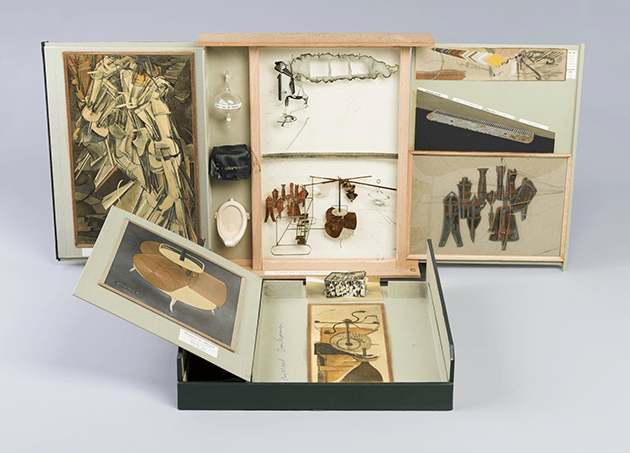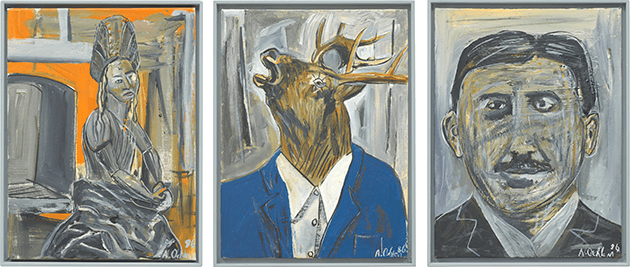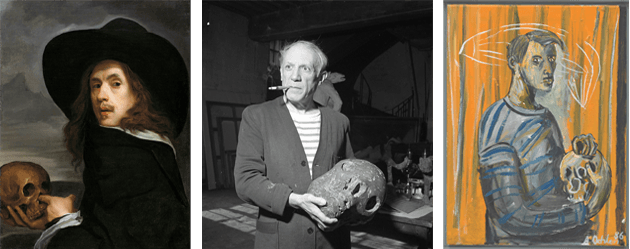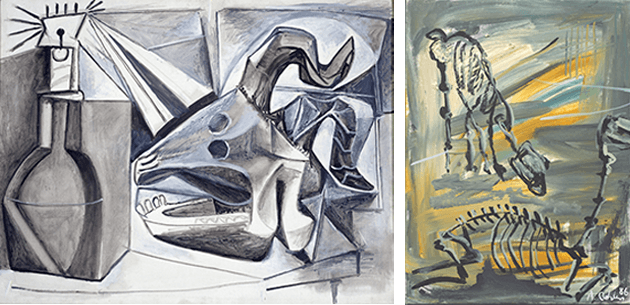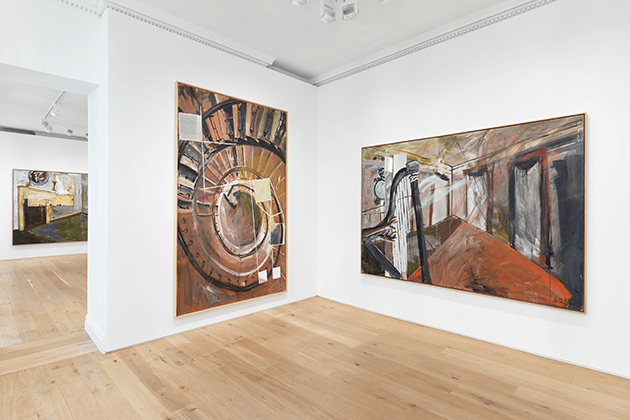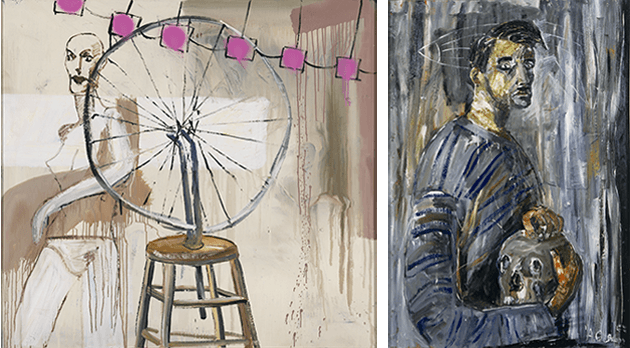20th Century & Contemporary Art Evening Sale
London Auction 15 October 2021
1
Serge Attukwei Clottey
Fashion icons
Estimate £30,000 - 40,000 ‡
Sold for £340,200
Create your first list.
Select an existing list or create a new list to share and manage lots you follow.
2
Flora Yukhnovich
Tondo
Estimate £40,000 - 60,000 ♠
Sold for £529,200
Create your first list.
Select an existing list or create a new list to share and manage lots you follow.
3
Jadé Fadojutimi
Myths of Pleasure
Estimate £80,000 - 120,000 ♠
Sold for £1,172,000
Create your first list.
Select an existing list or create a new list to share and manage lots you follow.
4
Emily Mae Smith
Invisible Woman
Estimate £40,000 - 60,000
Sold for £930,000
Create your first list.
Select an existing list or create a new list to share and manage lots you follow.
5
Tunji Adeniyi-Jones
Pattern Makers
Estimate £30,000 - 50,000 ‡♠
Sold for £302,400
Create your first list.
Select an existing list or create a new list to share and manage lots you follow.
6
Issy Wood
Eggplant / car interior
Estimate £100,000 - 150,000 ‡♠
Sold for £327,600
Create your first list.
Select an existing list or create a new list to share and manage lots you follow.
7
Cinga Samson
Hliso Street IV
Estimate £20,000 - 30,000 ‡
Sold for £239,400
Create your first list.
Select an existing list or create a new list to share and manage lots you follow.
8
Sanya Kantarovsky
No Eyes
Estimate £100,000 - 150,000 ‡
Sold for £390,600
Create your first list.
Select an existing list or create a new list to share and manage lots you follow.
9
Shara Hughes
Night Picket
Estimate £80,000 - 120,000 ‡
Sold for £869,500
Create your first list.
Select an existing list or create a new list to share and manage lots you follow.
10
Reggie Burrows Hodges
For the Greater Good
Estimate £30,000 - 50,000 ‡
Sold for £441,000
Create your first list.
Select an existing list or create a new list to share and manage lots you follow.
11
Milton Avery
Bird by Wild Sea
Estimate £120,000 - 180,000
Sold for £207,900
Create your first list.
Select an existing list or create a new list to share and manage lots you follow.
12
Milton Avery
White Gull Resting
Estimate £70,000 - 100,000
Sold for £189,000
Create your first list.
Select an existing list or create a new list to share and manage lots you follow.
13
Lucas Arruda
Untitled
Estimate £120,000 - 180,000 ‡
Sold for £352,800
Create your first list.
Select an existing list or create a new list to share and manage lots you follow.
14
Marlene Dumas
The Believer
Estimate £1,600,000 - 2,400,000 ‡♠
Sold for £1,656,000
Create your first list.
Select an existing list or create a new list to share and manage lots you follow.
15
Titus Kaphar
Holy Absence II
Estimate £200,000 - 300,000 ‡
Sold for £315,000
Create your first list.
Select an existing list or create a new list to share and manage lots you follow.
16
Albert Oehlen
Retrospektiv
Estimate £1,100,000 - 1,500,000 ‡♠
Sold for £1,353,500
Create your first list.
Select an existing list or create a new list to share and manage lots you follow.
17
Sigmar Polke
Negerplastik
Estimate £2,000,000 - 3,000,000 ‡
Sold for £3,047,500
Create your first list.
Select an existing list or create a new list to share and manage lots you follow.
18
Günther Förg
Ohne Titel
Estimate £350,000 - 450,000 ‡♠
Sold for £615,400
Create your first list.
Select an existing list or create a new list to share and manage lots you follow.
19
André Butzer
Chips und Pepsi und Medizin (Das Glück)
Estimate £70,000 - 90,000 ‡♠
Sold for £403,200
Create your first list.
Select an existing list or create a new list to share and manage lots you follow.
20
Katharina Grosse
Ohne Titel
Estimate £120,000 - 180,000 ‡♠
Sold for £277,200
Create your first list.
Select an existing list or create a new list to share and manage lots you follow.
21
Avery Singer
Untitled
Estimate £150,000 - 200,000
Sold for £403,200
Create your first list.
Select an existing list or create a new list to share and manage lots you follow.
22
Ed Ruscha
Doric
Estimate £400,000 - 600,000 ‡
Sold for £441,000
Create your first list.
Select an existing list or create a new list to share and manage lots you follow.
23
Yayoi Kusama
Silver Nets (EOKI)
Estimate £1,200,000 - 1,500,000 ‡
Sold for £1,837,500
Create your first list.
Select an existing list or create a new list to share and manage lots you follow.
24
Damien Hirst
N-(9-Acridinyl) Maleimide
Estimate £500,000 - 700,000 ‡♠
Sold for £736,400
Create your first list.
Select an existing list or create a new list to share and manage lots you follow.
25
Damien Hirst
Precious Moments
Estimate £1,000,000 - 1,500,000 ‡♠
Sold for £990,500
Create your first list.
Select an existing list or create a new list to share and manage lots you follow.
26
Gilbert & George
Day
Estimate £350,000 - 450,000 ‡♠
Sold for £453,600
Create your first list.
Select an existing list or create a new list to share and manage lots you follow.
27
Chris Ofili
Triple Beam Dreamer
Estimate £600,000 - 800,000 ‡♠
Sold for £1,014,700
Create your first list.
Select an existing list or create a new list to share and manage lots you follow.
28
Max Ernst
Pyramid Lake
Estimate £550,000 - 750,000 ‡♠
Sold for £627,500
Create your first list.
Select an existing list or create a new list to share and manage lots you follow.
29
Max Ernst
Matin et soir
Estimate £200,000 - 300,000 ‡♠
Sold for £226,800
Create your first list.
Select an existing list or create a new list to share and manage lots you follow.
30
Max Ernst
Homme (Spezialpreis für die Kurzfilmtage in Oberhausen)
Estimate £65,000 - 85,000 ‡♠
Sold for £151,200
Create your first list.
Select an existing list or create a new list to share and manage lots you follow.
31
Max Ernst
Euklid
Estimate £200,000 - 300,000 ‡♠
Sold for £239,400
Create your first list.
Select an existing list or create a new list to share and manage lots you follow.
32
Jean Fautrier
I'm falling in Love
Estimate £800,000 - 1,200,000 ‡♠
Sold for £760,600
Create your first list.
Select an existing list or create a new list to share and manage lots you follow.
33
Maria Helena Vieira da Silva
Champs de Sainte-Claire
Estimate £400,000 - 600,000 ‡♠
Create your first list.
Select an existing list or create a new list to share and manage lots you follow.
34
Sean Scully
Green Yellow Figure
Estimate £400,000 - 600,000 ‡♠
Sold for £567,000
Create your first list.
Select an existing list or create a new list to share and manage lots you follow.
35
George Condo
The Showgirl
Estimate £1,000,000 - 1,500,000 ‡
Sold for £1,232,500
Create your first list.
Select an existing list or create a new list to share and manage lots you follow.
36
Ed Ruscha
Spots
Estimate £180,000 - 250,000 ‡
Sold for £252,000
Create your first list.
Select an existing list or create a new list to share and manage lots you follow.
37
David Hammons
Elephant Dung
Estimate £150,000 - 250,000 ‡
Sold for £226,800
Create your first list.
Select an existing list or create a new list to share and manage lots you follow.
38
Mimmo Rotella
Il Jazz
Estimate £120,000 - 180,000 ‡♠
Create your first list.
Select an existing list or create a new list to share and manage lots you follow.
39
This lot is no longer available.
40
Mickalene Thomas
Portrait of Lili in Black and White
Estimate £150,000 - 250,000 ‡
Sold for £252,000
Create your first list.
Select an existing list or create a new list to share and manage lots you follow.
41
Andy Warhol
Lenin
Estimate £400,000 - 600,000 ‡
Sold for £428,400
Create your first list.
Select an existing list or create a new list to share and manage lots you follow.
42
Richard Prince
My Life as a Weapon
Estimate £450,000 - 650,000 ‡
Sold for £453,600
Create your first list.
Select an existing list or create a new list to share and manage lots you follow.
43
Rudolf Stingel
Untitled
Estimate £500,000 - 700,000 ‡♠
Create your first list.
Select an existing list or create a new list to share and manage lots you follow.
44
Cory Arcangel
Photoshop CS: 84 by 66 inches, 300 DPI, RGB, square pixels, default gradient, "Blue, Red, Yellow" (turn reverse on), mousedown y= 1550 x=18400, mouseup y=300 x=150
Estimate £100,000 - 150,000
Sold for £233,100
Create your first list.
Select an existing list or create a new list to share and manage lots you follow.
